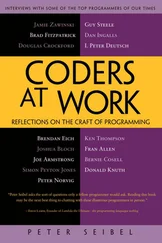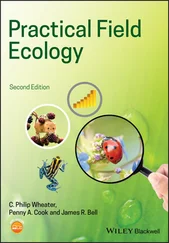Peter Siebel - Practical Common Lisp
Здесь есть возможность читать онлайн «Peter Siebel - Practical Common Lisp» весь текст электронной книги совершенно бесплатно (целиком полную версию без сокращений). В некоторых случаях можно слушать аудио, скачать через торрент в формате fb2 и присутствует краткое содержание. Год выпуска: 2005, ISBN: 2005, Издательство: Apress, Жанр: Программирование, на английском языке. Описание произведения, (предисловие) а так же отзывы посетителей доступны на портале библиотеки ЛибКат.
- Название:Practical Common Lisp
- Автор:
- Издательство:Apress
- Жанр:
- Год:2005
- ISBN:1-59059-239-5
- Рейтинг книги:4 / 5. Голосов: 1
-
Избранное:Добавить в избранное
- Отзывы:
-
Ваша оценка:
- 80
- 1
- 2
- 3
- 4
- 5
Practical Common Lisp: краткое содержание, описание и аннотация
Предлагаем к чтению аннотацию, описание, краткое содержание или предисловие (зависит от того, что написал сам автор книги «Practical Common Lisp»). Если вы не нашли необходимую информацию о книге — напишите в комментариях, мы постараемся отыскать её.
Practical Common Lisp — читать онлайн бесплатно полную книгу (весь текст) целиком
Ниже представлен текст книги, разбитый по страницам. Система сохранения места последней прочитанной страницы, позволяет с удобством читать онлайн бесплатно книгу «Practical Common Lisp», без необходимости каждый раз заново искать на чём Вы остановились. Поставьте закладку, и сможете в любой момент перейти на страницу, на которой закончили чтение.
Интервал:
Закладка:
(dolist (x foo)
(print x))
rather than this:
(dolist (x foo) (print x))
or
(dolist (x foo)
(print x))
the way you would if DOLIST was a function. A good Lisp environment will automatically format macro calls correctly, even for user-defined macros.
And even if a DOLIST form was written on a single line, there are several clues that it's a macro: For one, the expression (x foo)is meaningful by itself only if xis the name of a function or macro. Combine that with the later occurrence of xas a variable, and it's pretty suggestive that DOLIST is a macro that's creating a binding for a variable named x. Naming conventions also help—looping constructs, which are invariably macros—are frequently given names starting with do .
52
Using the empty list as false is a reflection of Lisp's heritage as a list-processing language much as the use of the integer 0 as false in C is a reflection of its heritage as a bit-twiddling language. Not all Lisps handle boolean values the same way. Another of the many subtle differences upon which a good Common Lisp vs. Scheme flame war can rage for days is Scheme's use of a distinct false value #f, which isn't the same value as either the symbol nilor the empty list, which are also distinct from each other.
53
Even the language standard is a bit ambivalent about which of EQ or EQL should be preferred. Object identity is defined by EQ, but the standard defines the phrase the same when talking about objects to mean EQL unless another predicate is explicitly mentioned. Thus, if you want to be 100 percent technically correct, you can say that (- 3 2) and (- 4 3) evaluate to "the same" object but not that they evaluate to "identical" objects. This is, admittedly, a bit of an angels-on-pinheads kind of issue.
54
Despite the importance of functions in Common Lisp, it isn't really accurate to describe it as a functional language. It's true some of Common Lisp's features, such as its list manipulation functions, are designed to be used in a body-form* style and that Lisp has a prominent place in the history of functional programming—McCarthy introduced many ideas that are now considered important in functional programming—but Common Lisp was intentionally designed to support many different styles of programming. In the Lisp family, Scheme is the nearest thing to a "pure" functional language, and even it has several features that disqualify it from absolute purity compared to languages such as Haskell and ML.
55
Well, almost any symbol. It's undefined what happens if you use any of the names defined in the language standard as a name for one of your own functions. However, as you'll see in Chapter 21, the Lisp package system allows you to create names in different namespaces, so this isn't really an issue.
56
Parameter lists are sometimes also called lambda lists because of the historical relationship between Lisp's notion of functions and the lambda calculus.
57
For example, the following:
(documentation 'foo 'function)
returns the documentation string for the function foo. Note, however, that documentation strings are intended for human consumption, not programmatic access. A Lisp implementation isn't required to store them and is allowed to discard them at any time, so portable programs shouldn't depend on their presence. In some implementations an implementation-defined variable needs to be set before it will store documentation strings.
58
In languages that don't support optional parameters directly, programmers typically find ways to simulate them. One technique is to use distinguished "no-value" values that the caller can pass to indicate they want the default value of a given parameter. In C, for example, it's common to use NULLas such a distinguished value. However, such a protocol between the function and its callers is ad hoc—in some functions or for some arguments NULLmay be the distinguished value while in other functions or for other arguments the magic value may be -1 or some #definedconstant.
59
The constant CALL-ARGUMENTS-LIMIT tells you the implementation-specific value.
60
Four standard functions take both &optional and &key arguments— READ-FROM-STRING , PARSE-NAMESTRING , WRITE-LINE , and WRITE-STRING . They were left that way during standardization for backward compatibility with earlier Lisp dialects. READ-FROM-STRING tends to be the one that catches new Lisp programmers most frequently—a call such as (read-from-string s :start 10)seems to ignore the :startkeyword argument, reading from index 0 instead of 10. That's because READ-FROM-STRING also has two &optional parameters that swallowed up the arguments :startand 10.
61
Another macro, RETURN , doesn't require a name. However, you can't use it instead of RETURN-FROM to avoid having to specify the function name; it's syntactic sugar for returning from a block named NIL . I'll cover it, along with the details of BLOCK and RETURN-FROM , in Chapter 20.
62
Lisp, of course, isn't the only language to treat functions as data. C uses function pointers, Perl uses subroutine references, Python uses a scheme similar to Lisp, and C# introduces delegates, essentially typed function pointers, as an improvement over Java's rather clunky reflection and anonymous class mechanisms.
63
The exact printed representation of a function object will differ from implementation to implementation.
64
The best way to think of FUNCTION is as a special kind of quotation. QUOTE ing a symbol prevents it from being evaluated at all, resulting in the symbol itself rather than the value of the variable named by that symbol. FUNCTION also circumvents the normal evaluation rule but, instead of preventing the symbol from being evaluated at all, causes it to be evaluated as the name of a function, just the way it would if it were used as the function name in a function call expression.
65
There's actually a third, the special operator MULTIPLE-VALUE-CALL , but I'll save that for when I discuss expressions that return multiple values in Chapter 20.
66
In Common Lisp it's also possible to use a LAMBDA expression as an argument to FUNCALL (or some other function that takes a function argument such as SORT or MAPCAR ) with no #'before it, like this:
(funcall (lambda (x y) (+ x y)) 2 3)
This is legal and is equivalent to the version with the #'but for a tricky reason. Historically LAMBDA expressions by themselves weren't expressions that could be evaluated. That is LAMBDA wasn't the name of a function, macro, or special operator. Rather, a list starting with the symbol LAMBDA was a special syntactic construct that Lisp recognized as a kind of function name.
Интервал:
Закладка:
Похожие книги на «Practical Common Lisp»
Представляем Вашему вниманию похожие книги на «Practical Common Lisp» списком для выбора. Мы отобрали схожую по названию и смыслу литературу в надежде предоставить читателям больше вариантов отыскать новые, интересные, ещё непрочитанные произведения.
Обсуждение, отзывы о книге «Practical Common Lisp» и просто собственные мнения читателей. Оставьте ваши комментарии, напишите, что Вы думаете о произведении, его смысле или главных героях. Укажите что конкретно понравилось, а что нет, и почему Вы так считаете.








